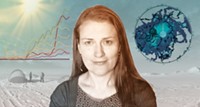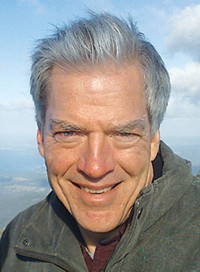Advertisement
Grab your lab coat. Let's get started
Welcome!
Welcome!
Create an account below to get 6 C&EN articles per month, receive newsletters and more - all free.
It seems this is your first time logging in online. Please enter the following information to continue.
As an ACS member you automatically get access to this site. All we need is few more details to create your reading experience.
Not you? Sign in with a different account.
Not you? Sign in with a different account.
ERROR 1
ERROR 1
ERROR 2
ERROR 2
ERROR 2
ERROR 2
ERROR 2
Password and Confirm password must match.
If you have an ACS member number, please enter it here so we can link this account to your membership. (optional)
ERROR 2
ACS values your privacy. By submitting your information, you are gaining access to C&EN and subscribing to our weekly newsletter. We use the information you provide to make your reading experience better, and we will never sell your data to third party members.
Environment
ACS Award for Creative Advances in Environmental Science & Technology
January 2, 2006
| A version of this story appeared in
Volume 84, Issue 1
Sponsored by Air Products & Chemicals in memory of Joseph J. Breen
When it comes to environmental organic chemistry, Ren?? P. Schwarzenbach wrote "the book."
Correction—Schwarzenbach and two other scientists cowrote the widely used text "Environmental Organic Chemistry." Schwarzenbach is quick to emphasize that he owes his career accomplishments to collaboration.
Schwarzenbach, 60, heads the department of environmental sciences at the Swiss Federal Institute of Technology (ETH), Zurich, and is a former member of the directorate of the Swiss Federal Institute of Aquatic Science & Technology (EAWAG). Schwarzenbach teamed up with Philip M. Gschwend, a professor of civil and environmental engineering at Massachusetts Institute of Technology, and Dieter M. Imboden, a professor of environmental physics at ETH Zurich, to write the breakthrough textbook, first published in 1993.
"The first edition of the book was the first of its kind, was widely praised, and was quickly adopted by almost everyone who teaches environmental chemistry from an organic perspective," says Paul G. Tratnyek, associate professor at Oregon Health & Science University, Beaverton. The volume was crowned as the best new book in chemistry in 1994 by the Association of American Publishers.
Tratnyek, who teaches from the text, adds, "Schwarzenbach's book has catalyzed the coalescence of the field of environmental organic chemistry in a way that will profoundly influence how chemists perceive environmental science and how environmental scientists view chemistry."
The second edition of "Environmental Organic Chemistry," significantly expanded from the first, came out in 2003. "It's a monster," Schwarzenbach says with a laugh. In 2004, the 1,300-page book was translated into Chinese.
Schwarzenbach completed his doctorate in 1973, at ETH Zurich, applying computer technology to analytical chemistry so as to elucidate the structure of organic compounds. In 1974, Schwarzenbach was about to start his own company when his career took an unexpected turn.
He attended an analytical chemistry meeting in Basel where he heard the late Max Blumer, one of the pioneers in organic geochemistry and senior scientist at Woods Hole Oceanographic Institute (WHOI), speak about the plethora of natural and synthetic organic chemicals in the environment.
Schwarzenbach was fascinated. "I'd never heard about synthetic chemicals in the environment before," he says.
That evening, he had dinner with Blumer who, after the meal, offered Schwarzenbach a postdoc position at WHOI. Schwarzenbach gave up his business plans and in 1975 moved across the Atlantic to Cape Cod. It was at WHOI where he met Gschwend, who was then working on his doctorate.
Meanwhile, in 1981, Schwarzenbach published with John C. Westall a highly influential and heavily cited paper on the sorption behavior of organic pollutants in the ACS journal Environmental Science & Technology.
Schwarzenbach and Westall, then both with EAWAG in Switzerland, combined research done at the laboratory bench and in the field to describe how nonpolar organic compounds move from surface water to groundwater. The paper was honored in 2001 as one of the 10 most widely cited in the first 35 years of ES&T. That paper, together with a number of other highly cited papers of the Schwarzenbach group in various other fields of environmental organic chemistry, helped land him in the ISI Highly Cited Researchers Database as an original member in 2000.
The award address will be presented before the Division of Environmental Chemistry.—Cheryl Hogue






Join the conversation
Contact the reporter
Submit a Letter to the Editor for publication
Engage with us on Twitter